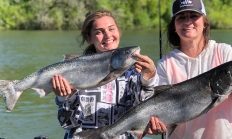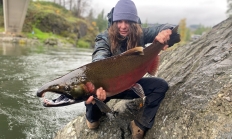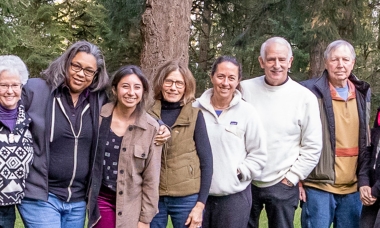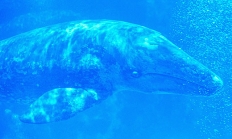
Search myodfw.com
Mouth calls, also known as diaphragm calls, can seem intimidating but they have some advantages over other kinds of calls. Mouth calls are popular with Oregon turkey hunters because: They're easier to keep dry during wet, spring seasons than are box or slate calls. Since the the call is in your mouth, you can call in a turkey without moving and possible spooking the bird. With practice, they can produce very realistic turkey sounds. Parts of a mouth call There are four parts to a mouth call. Starting at the outside of the call there’s: The tape. The tape stops




Razor clam conservation closure begins July 15 on Clatsop beaches
ASTORIA, Ore – The annual conservation closure of razor clamming on Clatsop beaches begins 12:01 a.m. July 15. The Oregon Department of Fish and Wildlife encourages clammers to take advantage of the low tide series that begins July 8. However, ODFW reminds clammers that although the low tide series…



NW WILDLIFE VIEWING December 4, 2025 Tillamook County Birds Large numbers of waterfowl arrive before November and will likely spend the rest of the winter here. They will raft up out in the middle of most local estuaries on calm days but will move around with the incoming tide and on windy days. Many species of diving ducks can be seen on area lakes and bays. Likewise, many migrating geese are beginning to arrive and are using area fields, along with many egrets, herons and wintering raptors. Pastures and fields are heavily used by a variety of waterfowl when flooded
The Columbia River is renowned for its salmon and steelhead runs. In a year of good returns, over 1 million Chinook, coho and sockeye salmon, and summer steelhead travel up the river to spawn in its tributaries. Less known are the river’s excellent smallmouth bass and walleye fisheries. While most anglers fish this large river from a boat, there is plenty of good bank access at various parks, boat launches and beaches.
To be an accurate shooter, it’s important to develop a consistent grip and draw. One of the most common mistakes bowhunters make is tensing up and gripping the bow too firmly. A firm grip will torque the bow, or send it out of alignment, resulting in a poor shot and perhaps a painful slap on your arm from the bow string. Develop a consistent grip The grip of the bow should rest on the pad of your thumb and should not cross the lifeline of your hand. With the bow in this position, your fingers will be off to the

Free fishing days Friday and Saturday after Thanksgiving
Note: Recreational ocean crabbing is closed through Nov 30. SALEM, Ore.- Get outdoors with friends and family and enjoy free fishing, crabbing and clamming on Friday and Saturday, Nov. 28 and 29. Statewide free fishing days are a great chance to take someone new fishing and celebrate Oregon's…
The Canada lynx is only slightly larger than the bobcat. Nevertheless, long legs and long fur produce the illusion that the lynx is considerably larger than it actually is. Documented accounts of wild lynx are rare and lynx are not expected to currently reside in Oregon. However, if lynx were to be observed, it is likely to occur at higher elevations such as in the Cascade Range, Blue Mountains or Wallowa Mountains. Habitats used by lynx often are defined in terms of habitats used by their primary prey species, thus good snowshoe hare habitat usually is considered to be good



Shooting accurately starts with the proper form, and that begins with a good stance. From your feet up through your hips and torso, a solid foundation in your lower body will improve your shooting. Start with an open stance The “open” stance is a good one for beginners. It’s easy to master and to practice consistently. An open stance positions yours hips and shoulders in-line with the direction you ’re shooting. This perpendicular setup to the target is simple to do. First, place one foot on each side of the shooting line. Most ranges will have these lines. If not

There's more than one way to pluck a turkey. Whatever method you choose, don’t just grab a handful of feathers and start yanking. This could rip the very thin skin, and once you’ve ripped the skin it’s difficult to finish plucking. In fact, at that point you may need to resort to skinning the bird. Keep the feet attached to while turkey while plucking it. They’ll give something to hold on to as you rotate and move the carcass around for thorough plucking. Dry plucking a bird – simple but time consuming To dry pluck a turkey, hang it up

The most common whale off the Oregon coast is the gray whale. In addition to the approximately 200 resident gray whales that live nearly year-round off Oregon, a winter and spring migration brings about 18,000 more past our coast. Gray whales are baleen whales (mysticetes). They grow to 50 feet in length and will weigh up to 80,000 pounds; adult females are larger than males, which is common in all baleen whales. They do not have a dorsal fin on their back but instead have a series of knuckles. These whales are mottled gray and are covered with barnacles and

